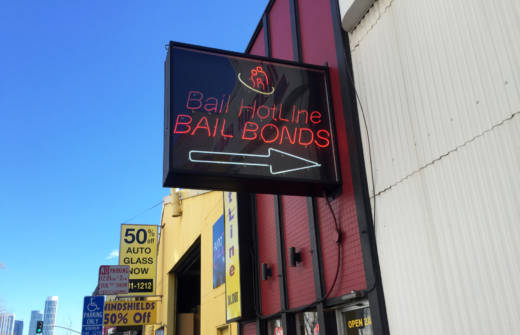It's impossible to make a direct comparison, because San Francisco doesn't keep track of what happens to defendants released on money bail. But Szabo pointed to data compiled by the U.S. Department of Justice examining pretrial release outcomes in the 75 largest counties in the nation -- including San Francisco.
One report showed that double the percentage of defendants -- 12 percent -- were arrested while they were out on bail or on their own recognizance during May 2006.
Another showed that in all of 2009, 29 percent of people out on bail or their own recognizance either committed a new crime, failed to appear in court or were taken back into custody for violating the terms of their release.
Szabo said these numbers show that the PSA tool is more accurate than money bail at predicting whether someone should be released as they await trial.
"Whether you’re using an algorithm or money bail, the criminal justice system is in the very difficult business of predicting criminal behavior," Szabo said. "The key difference is that the algorithm assists counties with custody decisions based on a statistically significant prediction of pretrial behavior, as opposed to how much money you have in your bank account."
The PSA tool being used in San Francisco isn't without critics -- and nor is the larger practice of relying on computer algorithms to make criminal justice decisions.
Created by the Laura and John Arnold Foundation, the PSA tool was given to San Francisco and 37 other jurisdictions for free. In San Francisco, its use flew largely under the radar until this summer, when it was revealed that a man accused in a robbery and murder on Twin Peaks had been determined by the tool to be fit for release.
City officials said at the time that the tool wasn't at fault -- human error was: An employee at the pretrial services agency entered incorrect data about the man's past. But after we published this story, Eileen Hirst, a spokeswoman for the San Francisco Sheriff’s Department, told KQED that the calculation was not incorrect and that city officials re-ran the numbers multiple times to make sure. Hirst noted that a judge still could have overruled the PSA tool’s recommendation.
But critics seized on the mistake as evidence that these tools shouldn't replace a court's judgment. Supporters of risk assessment agree, saying that the risk assessment should guide, not determine, decisions for judges.
And there are plenty of instances where someone out on bail committed a new crime.
In San Francisco, for example, Randall Stovall was recently arraigned on charges of attempted first-degree robbery, attempted carjacking and assault on a transportation employee. Stovall was already out on bail for alleged human trafficking of a minor, attempted pimping of a minor and other felony charges when the alleged attack on a Muni driver occurred.
He made bail after the most recent charges and is currently out of jail awaiting trial. He was not recommended for release under the PSA tool, but under the California constitution he has a right to bail.
This story has been updated since it was initially published to reflect comments made by a spokeswoman for the San Francisco Sheriff's Department.
